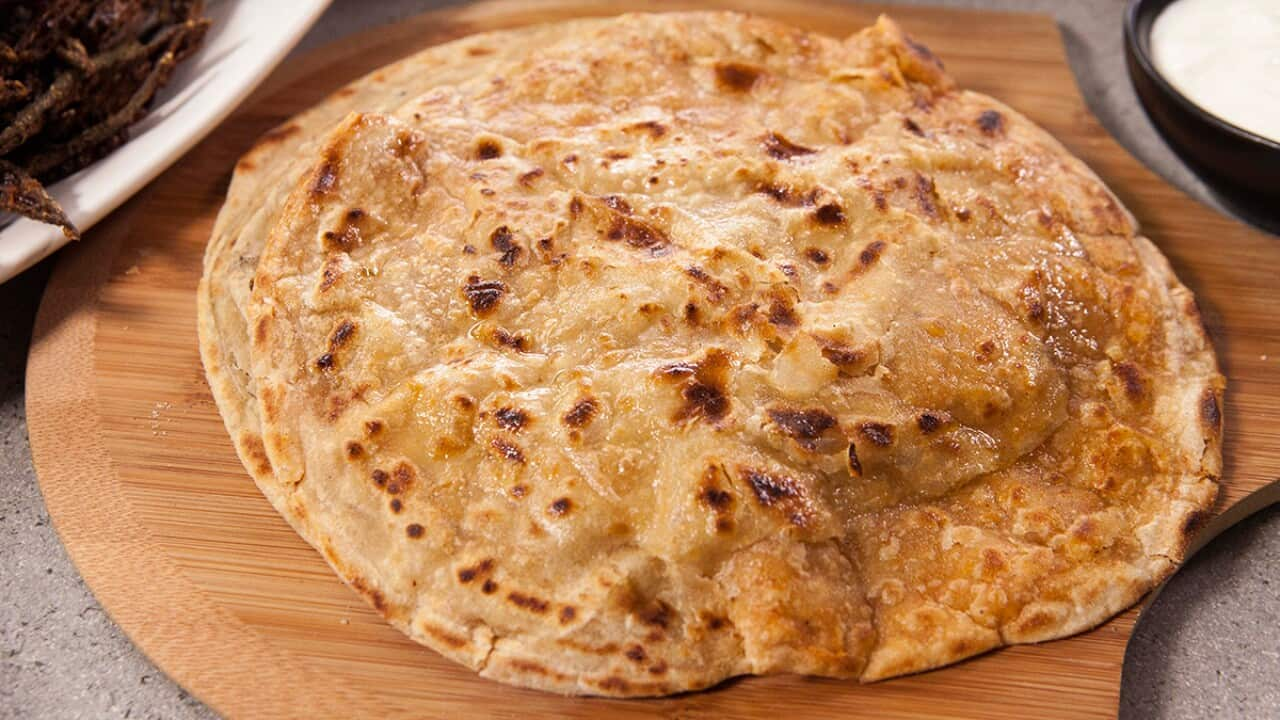I am a chapati-making machine.
Most nights at around 6pm I pull out my stash of from the bottom of my pantry, measure out two or three katoris in to a white ceramic bowl, season it with a generous half teaspoon of salt, add a few dollops of ghee, and then draw this mix together with a dexterous hand under a thin stream of hot running water.
By this point of the evening the troops are hungry. This means that, for the next five or 10 minutes, as the chapati dough rests, I’m occupied with swiping grubby hands determined to pinch tastes from the bowl that sits as a lure in the middle of my kitchen table.
Then there’s the flouring of the bench, the rolling, and the cooking on my very hot, very well seasoned tawa.
The near-nightly culinary commitment this exercise requires is not insignificant.
But just before you go handing out any mother-of-the-year awards I need to be clear that, for me, this effort is entirely self-serving.
Cooking dinner for young kids with no real palate for spice was without doubt one of the most tedious aspects of parenting. Oh my God, the steamed broccoli!
Now I had created this monster: for some reason I believed that not challenging the boys’ young palates would make meal times simpler. Feed ‘em without a fight.
And this did work for a time. What I hadn’t counted on was how this mindless roster of same-same cooking would drive my spirit in to the ground.
Back peddling wasn’t simple. But having been raised to eat spice myself, I knew where I needed to start: with the innocuous presentation of rice, a mild and some child-friendly sabzi.
A child-friendly sabzi draws in a safe and familiar vegetable and then infuses it with enough spice to provide profile but not so much that sensitive young palates are shocked in to rejection.
So that might mean potatoes to start, or the Indian childhood classic that is – carrots and peas.
Spice, then, is scaled back to a simple blend of soft and earthy basics – think salt, cumin seed, ground coriander, a little turmeric, some fresh ground ginger and a knob of jaggery to sweeten.
But this is not enough, I learned. Not in my home where for so many nights I had ceded savoury ground to the bland and the basic. I needed another lure to engage them, and this I found in chapati.
Across the vast breadth and depth of Indian cuisine, both flat and fermented breads are used as vehicles:
- A paper-thin is just made to wrap around spicy scrambled egg or a dry-cooked, mustard leaf-scented sabzi of aloo;
- Idli is a deliciously sour and spongy cake best experienced when broken in to bite-sized chunks and dipped in to fresh-made ;
- Chapati, as I found out, is a carriage that can transport two young boys away from steamed broccoli toward a future filled with flavour and newness and spice.

Source: Jason Loucas
With that connection to chapati established, Indian meals ceased to become about fear of spice and fast became about the tactile pleasure and experience of rolling and eating homemade flatbreads.
Of course there were still – are still – glitches: while both boys are down with subtly spiced cabbage sweet with kalonji and cooked over slow heat to caramelised joy, my youngest, aged six, remains mildly resistant to twice-cooked gobi.
With steamed broccoli off the menu, my nightly kitchen ritual has once more evolved in to a space of interest if not always pleasure.
Vegetables and spice are front and centre, alongside homemade paneer and – when time is short but appetites are keen – matar, aloo or rolled out on a floury bench with my now deft-hands and cooked in a flash.






